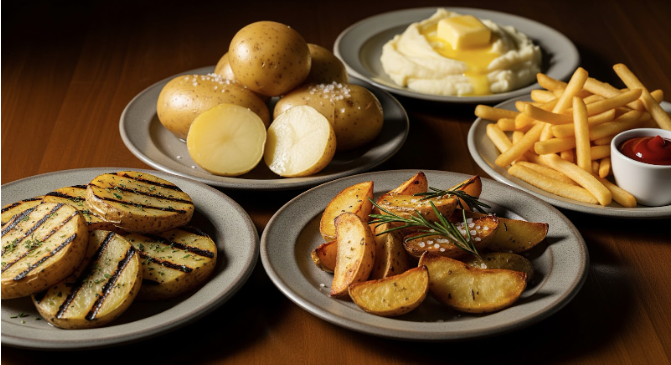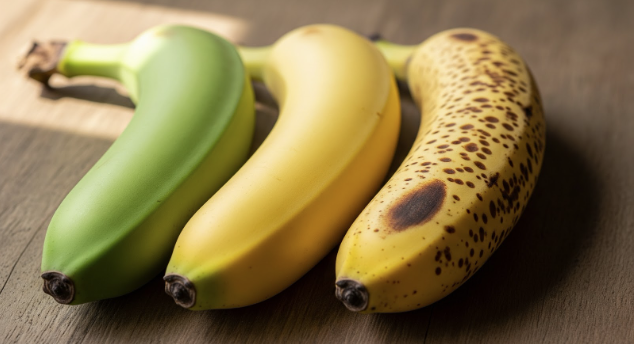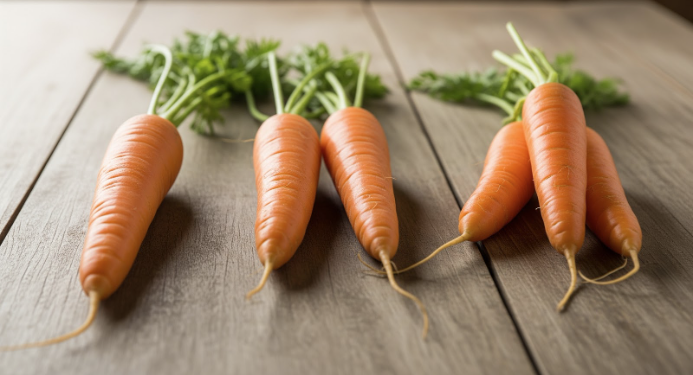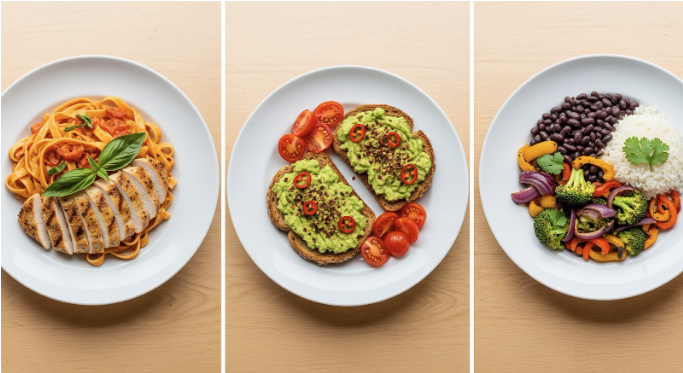5 Hidden Factors That Impact Your Blood Sugar Levels
Not all carbohydrates can be treated the same, especially if you’re diabetic. Five hidden factors can affect how your body processes carbohydrates:
Cooking Methods
Ripeness of Produce
Portion Size & Glycemic Load
Food Processing
Meal Composition
Learn how these five factors alter glycemic index (GI) so that you can better manage your blood sugar.
Note: The glycemic index (GI) is a ranking system for carbohydrate-containing foods that rates how quickly they raise blood glucose levels after being eaten. Foods with a high GI are digested and absorbed quickly, causing a rapid spike in blood sugar, while foods with a low GI are digested more slowly, leading to a more gradual increase in blood sugar.
Cooking Methods Affect Blood Sugar Levels
How foods are cooked can significantly impact your blood sugar levels, especially if you're managing diabetes or aiming to maintain steady energy throughout the day. Let's dive into which cooking methods will keep your blood sugar in check and which will cause blood sugar spikes.
Raw vs. Cooked
Note that a raw potato has 11.8 grams of carbohydrates per half cup. Now, let’s cook it four different ways and see what happens to the carbohydrate counts.
Carbs Per Half Cup of Potato
As the carb count increases, so does the average glycemic index value.
Average Glycemic Index for Russet Potato
But why does the GI value rise when food is cooked, and what effect does it have on your blood sugar levels?
-
Gentle cooking techniques at low heat lead to steadier glucose levels because the food’s natural structure is maintained.
Steaming preserves nutrients while minimizing rapid starch breakdown, making it the best option for and blood sugar control.
Boiling will have a minimal impact on GI if using gentle heat.
For best results, reduce cooking time to lower carbs and simple sugars.
-
High heat speeds up the conversion of complex carbs into sugars, which increases the glycemic index of food.
Longer cooking times concentrate sugars by changing the structure of food, which increases its carbohydrate count. For best GI results, reduce cooking time, if possible.
Grilling and barbecuing may have the highest impact on GI because it causes foods to produce compounds that are liked to insulin resistance like AGEs (advanced glycation end-products).
Deep frying not only adds fat but also increases the overall carbohydrate content, leading to a higher glycemic load.
-
Microwaving promotes a fast breakdown of starches, which results in sharp blood sugar spikes.
-
Cooking, cooling, and then reheating starchy foods can help reduce their impact on blood sugar by increasing resistant starch levels. Resistant starches slow down digestion, which helps regulate blood sugar levels.
Cool starches like rice, pasta, and potatoes in the fridge for at least 8-24 hours before reheating to lower their glycemic impact.
Ripeness Changes Glycemic Index
The ripeness of foods like fruit and vegetables is another factor that can impact your glycaemic index. As fruits and vegetables ripen, the starch breaks down into simple sugars, making the sugars easy to absorb by the body.
Banana Ripeness & GI
The carb count will remain the same for these three bananas; however, the type of carbohydrate changes. Starches are converted to fructose and sucrose, making the banana sweeter, which has an impact on blood sugar.
Average Glycemic Index for Bananas
Even though all three bananas have the same amount of carbs, the overripe banana will spike blood sugar levels more than the unripe or ripe bananas.
Portion Size Matters
While it’s important to consider a food’s glycemic index (GI), glycemic load (GL) is a more comprehensive and accurate measure of how foods impact blood sugar levels. GI measures how quickly a food raises blood sugar, while glycemic load (GL) measures both the speed and the amount of carbohydrates in a typical serving.
The Effect of Serving Size
Once serving of raw carrots is equal to one medium carrot or one cup chopped. Examine the relationship between carbohydrates, glycemic index, and glycemic load as the number of servings increases.
Comparison of GI, GL & Carbs in Raw Carrots
While the glycemic index remains consistent, the glycemic load and the amount of carbohydrates increase with each additional serving eaten. The GI does not change because it does not factor in how many servings of carrots you ate. GL measures the overall effect of a food on blood sugar levels, taking both quality and quantity into account.
Processed Foods Can Impact Blood Sugar
When analyzing how carbohydrates impact blood sugar levels, the physical and chemical structure of the carbs makes a difference. Foods with higher amylose content have a lower glycemic index (GI), while more easily digested amylopectin raises the GI. More processed foods, like white flour or fruit juice, have a higher GI because grinding and rolling disrupt the starch molecules.
Fruit vs. Juice
A serving of orange juice has a higher GI than a whole orange, and a much higher glycemic load (GL). This is because whole oranges contain fiber, which slows the absorption of sugar, while juice lacks fiber and contains the concentrated sugar from multiple oranges. Even if no additional sugar was added to the juice during processing, the orange fruit is still a better choice.
-
There is little nutritional difference between frozen and fresh produce on blood sugar levels.
-
Fresh fruit is generally better for a lower glycemic index (GI) than canned fruit, especially when canned fruit is packed in heavy syrup, which can quickly raise blood sugar. However, canned fruit without added sugar is nutritionally similar to fresh fruit and has a comparable impact on blood sugar, particularly if it's canned in water.
-
Fresh produce generally has a lower glycemic index (GI) than dried produce because dried is more concentrated in sugar and carbohydrates. While fresh fruit has a higher water content, which leads to lower sugar density and a gentler effect on blood sugar, dried fruit's concentrated sugar can cause a quicker and higher rise in blood sugar if consumed in larger portions.
-
Whole grains have a lower glycemic index (GI) than processed grains because their higher fiber content slows digestion and sugar absorption, leading to a more gradual rise in blood sugar. In contrast, processed or refined grains have had the bran and germ removed, resulting in a higher GI and faster blood sugar spikes.
Mixing Foods Changes A Meal’s Overall Glycemic Index
Eating a meal that consists of fats, proteins, or fiber can slow down digestion and reduce the impact of high-GI carbs on blood sugar levels. Try these food pairings:
-
Instead of just potatoes or pasta, add proteins like chicken, beef, or fish.
Protein takes longer to digest than simple carbohydrates, which will slow down the rise in blood glucose.
-
Instead of just eating toast, try adding healthy fats like almond butter or avocado.
Fats delay gastric emptying, which results in a more gradual rise in blood sugar and a slower, more sustained release of glucose into the bloodstream.
-
Instead of eating just rice, add beans or mixed vegetables.
Fiber acts as a physical barrier and slows the absorption of carbohydrates.
-
Adding acidic ingredients like vinegar or lemon juice can lower a food's GI by slowing down digestion of carbohydrates.
For a complete glycemic index chart of all foods, visit the Glycemic Index Guide. Note that the values listed in any guide are not exact and may vary, so guides should only be used as a reference.
We’re Here to Help
Weight Management
Nutrition Counseling & Personal Training Plans
Achieve your weight loss goals through a comprehensive plan that combines nutrition counseling with personal training and is tailored to your goals, lifestyle, preferences, and fitness level.








